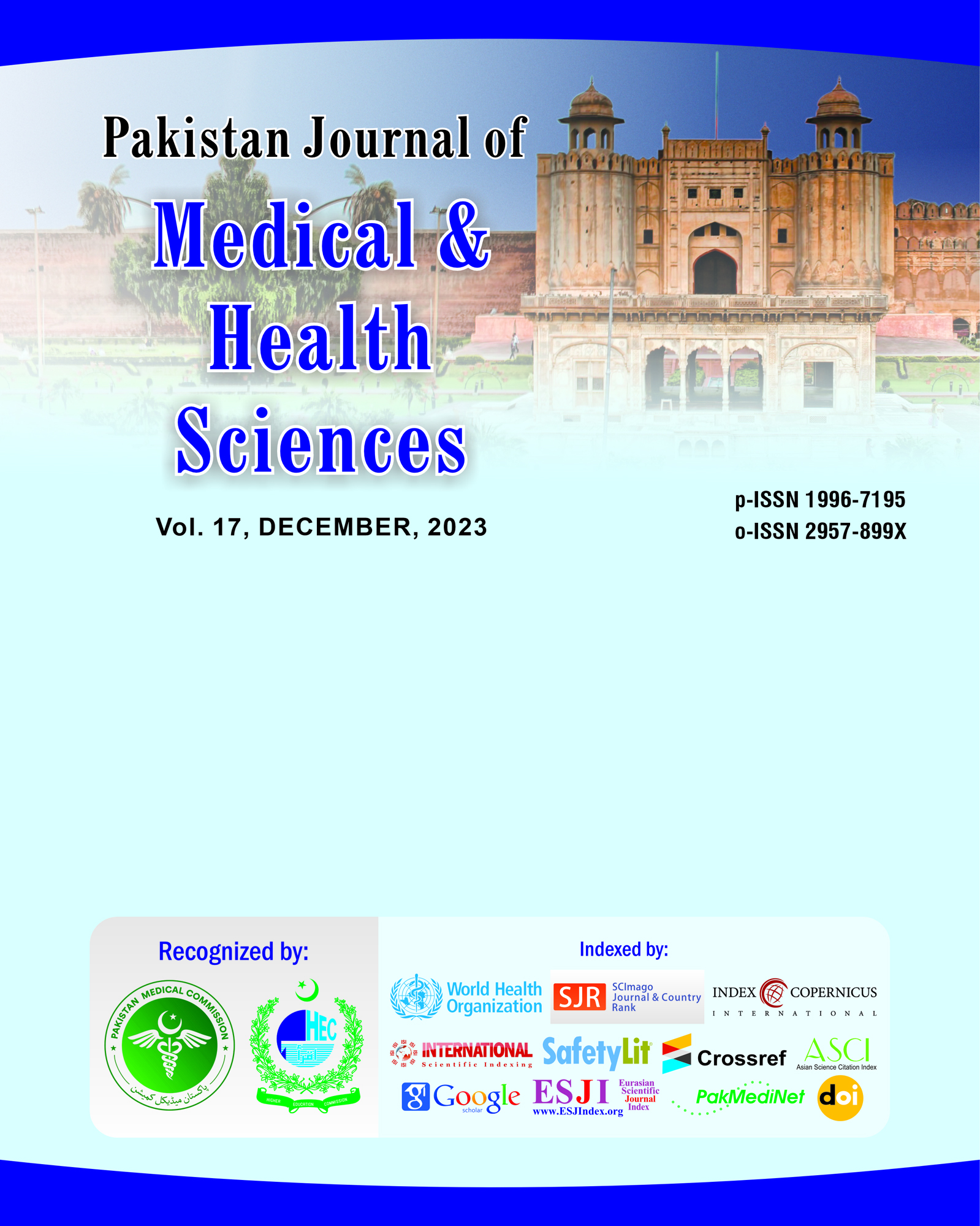Olanzapine-Induced Pancreatic Damage in Adult Male Albino Rats: Evaluating the Therapeutic Potential of Granulocyte Colony-Stimulating Factor and Umbelliferon (A Comprehensive Histological, Immunohistochemical, and Biochemical Investigation)
DOI:
https://doi.org/10.53350/pjmhs020231712139Abstract
Aim of the Study: G-CSF and umbelliferon were tested to see if they could reduce olanzapine-induced pancreatic damage in adult male albino rats. Olanzapine's pancreatic damage and G-CSF and umbelliferon's protective effects were examined in terms of histological, immunohistochemical, and biochemical changes.
Study Type: A randomised, controlled study examined the effects of olanzapine, G-CSF, and umbelliferon on pancreatic tissue.
Study place: Rashid Latif Medical College, Lahore.
Research Method: 40 mature male albino rats were divided into four ten-rat groups: Regular saline was provided to the Control Group for eight weeks. The Olanzapine Group received 10 mg/kg/day oral olanzapine for eight weeks. The Olanzapine + G-CSF Group received 10 mg/kg/day intraperitoneal olanzapine and 50 µg/kg/day G-CSF for 8 weeks. Oral olanzapine (10 mg/kg/day) and umbelliferon (50 mg/kg/day) were given to Olanzapine + Umbelliferon Group participants for eight weeks. After the experiment, blood and pancreatic tissues were collected for histological, immunohistochemical, and biochemical investigation. The histological study included H&E and Masson's trichrome staining. The immunohistochemistry examination assessed the expression of caspase-3, TNF-α, and insulin. Both MDA and SOD, as well as GPx and metabolic parameters (fasting glucose and insulin), were investigated by the use of biochemical assays. The data were examined with SPSS 25 using a one-way analysis of variance (ANOVA) and Tukey's post hoc test.
Results:
1 The olanzapine group demonstrated substantial pancreatic architectural deformation, collagen deposition, and cellular infiltration, according to the histological findings. Umbelliferon and G-CSF work synergistically to improve pancreatic architecture while concurrently lowering collagen.
- According to the immunohistochemistry data, the group that was provided olanzapine exhibited heightened levels of apoptosis and inflammation, as shown by the increased expression of Caspase-3 and TNF-α. A reduction in insulin expression indicates β-cell malfunction. Umbelliferon and G-CSF restored insulin levels and significantly reduced caspase-3 and TNF-α expression.
3 Biochemical Results: Oxidative stress was shown by increased MDA and decreased SOD and GPx activity in the olanzapine group. Fasting glucose increased while insulin declined. The treatment of G-CSF and umbelliferon normalised metabolic and oxidative stress indicators.
Discussion: The study showed that olanzapine causes pancreatic oxidative stress, inflammation, and apoptosis. Umbelliferon and G-CSF prevented these pathologies. G-CSF and umbelliferon, due to their tissue-repairing and anti-inflammatory properties, improved pancreatic architecture, reduced oxidative stress, and increased β-cell function. These findings suggest G-CSF and umbelliferon may cure olanzapine-induced pancreatic dysfunction.
Conclusion: Histology, immunohistochemistry, and biochemistry show that olanzapine causes pancreatic oxidative stress, apoptosis, and inflammation. G-CSF and umbelliferon protected against olanzapine-induced pancreatic damage, suggesting they may minimise its metabolic adverse effects. These findings improve our understanding of olanzapine-induced pancreatic damage and prepare researchers for future therapeutic intervention studies..
Keywords: Granulocyte colony-stimulating factor (G-CSF), Oxidative stress, Caspase-3, TNF-α
Downloads
How to Cite
Issue
Section
License
Copyright (c) 2023 Navida Manzoor, Nosheen Khurram, Fareeha Naseer Syed, Attya Zaheer, Qurat Ul Ain Javaid, Sadia Islam

This work is licensed under a Creative Commons Attribution 4.0 International License.


